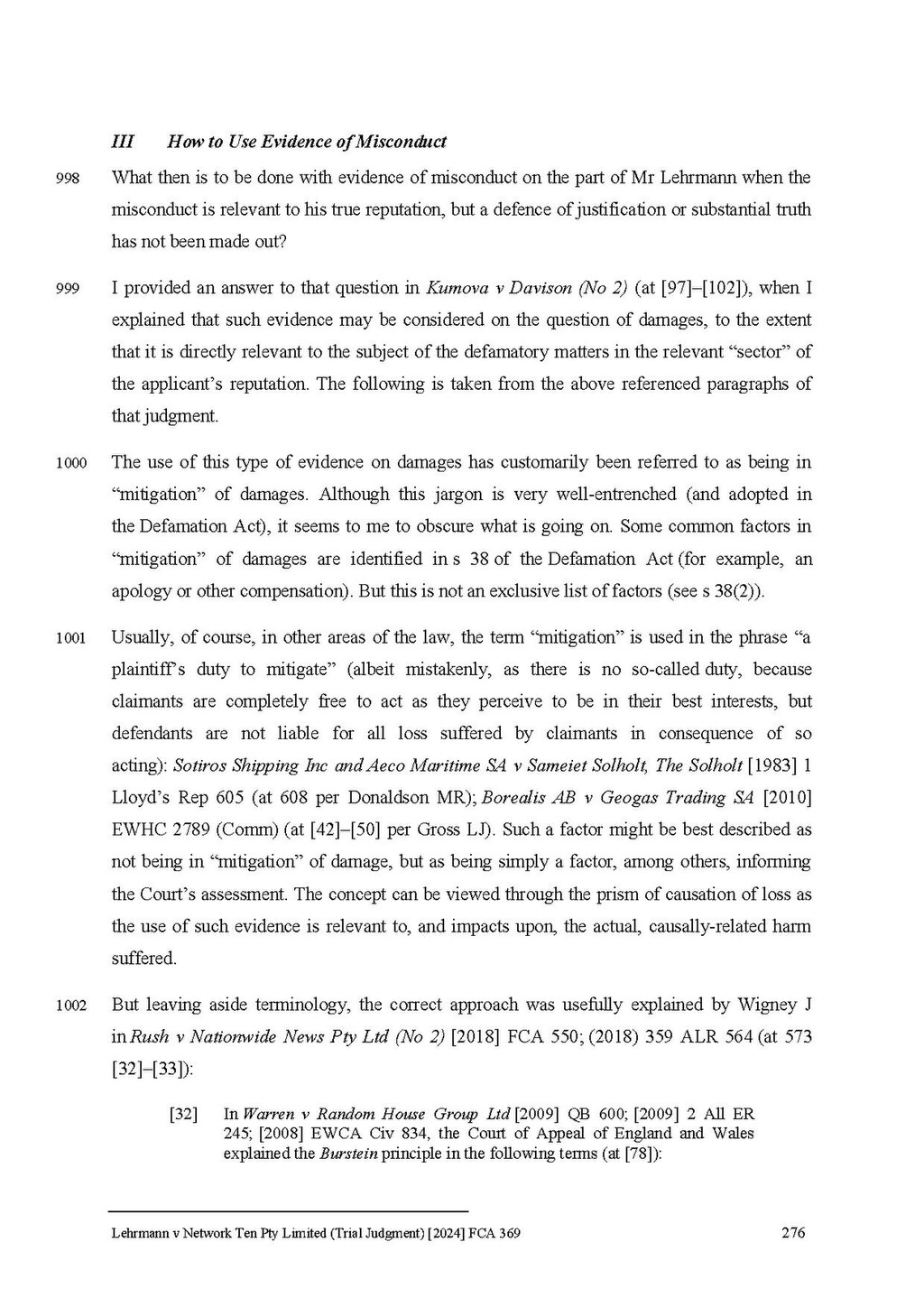IIIHow to Use Evidence of Misconduct
998 What then is to be done with evidence of misconduct on the part of Mr Lehrmann when the misconduct is relevant to his true reputation, but a defence of justification or substantial truth has not been made out?
999 I provided an answer to that question in Kumova v Davison (No 2) (at [97]–[102]), when I explained that such evidence may be considered on the question of damages, to the extent that it is directly relevant to the subject of the defamatory matters in the relevant "sector" of the applicant's reputation. The following is taken from the above referenced paragraphs of that judgment.
1000 The use of this type of evidence on damages has customarily been referred to as being in "mitigation" of damages. Although this jargon is very well-entrenched (and adopted in the Defamation Act), it seems to me to obscure what is going on. Some common factors in "mitigation" of damages are identified in s 38 of the Defamation Act (for example, an apology or other compensation). But this is not an exclusive list of factors (see s 38(2)).
1001 Usually, of course, in other areas of the law, the term "mitigation" is used in the phrase "a plaintiff's duty to mitigate" (albeit mistakenly, as there is no so-called duty, because claimants are completely free to act as they perceive to be in their best interests, but defendants are not liable for all loss suffered by claimants in consequence of so acting): Sotiros Shipping Inc and Aeco Maritime SA v Sameiet Solholt, The Solholt [1983] 1 Lloyd's Rep 605 (at 608 per Donaldson MR); Borealis AB v Geogas Trading SA [2010] EWHC 2789 (Comm) (at [42]–[50] per Gross LJ). Such a factor might be best described as not being in "mitigation" of damage, but as being simply a factor, among others, informing the Court's assessment. The concept can be viewed through the prism of causation of loss as the use of such evidence is relevant to, and impacts upon, the actual, causally-related harm suffered.
1002 But leaving aside terminology, the correct approach was usefully explained by Wigney J in Rush v Nationwide News Pty Ltd (No 2) [2018] FCA 550; (2018) 359 ALR 564 (at 573 [32]–[33]):
[32] In Warren v Random House Group Ltd [2009] QB 600; [2009] 2 All ER 245; [2008] EWCA Civ 834, the Court of Appeal of England and Wales explained the Burstein principle in the following terms (at [78]):
